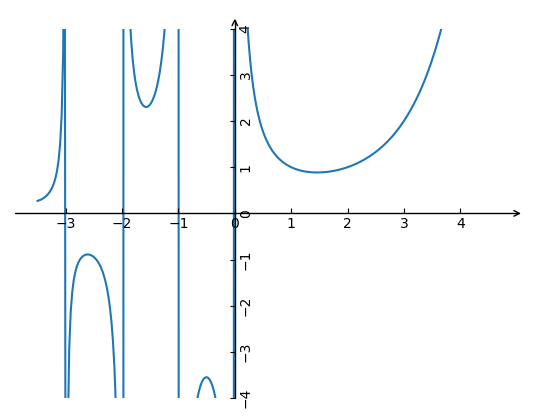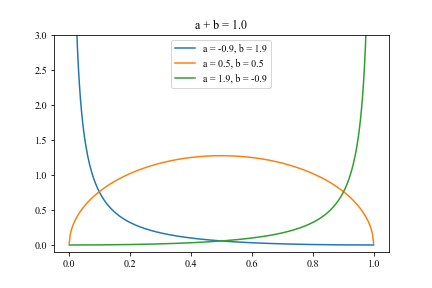Springboot集成MongoDB存储文件、读取文件
一、前言和开发环境及配置
可以转载,但请注明出处。
之前自己写的SpringBoot整合MongoDB的聚合查询操作,感兴趣的可以点击查阅。
https://www.cnblogs.com/zaoyu/p/springboot-mongodb.html
使用mongodb存储文件并实现读取,通过springboot集成mongodb操作。
可以有两种实现方式:
1. 单个文件小于16MB的,可以直接把文件转成二进制或者使用如Base64编码对文件做编码转换,以二进制或者string格式存入mongodb。
读取时,把二进制数据或者string数据转成对应的IO流或做解码,再返回即可。
2. 对于单个文件大于16MB的,可以使用mongodb自带的GridFS
开发环境、工具:JDK1.8,IDEA 2021
Springboot版本:2.7.5
Mongodb依赖版本:4.6.1
SpringBoot的配置 application.properties 如下
# 应用名称
spring.application.name=demo
#server.port=10086不配置的话,默认8080
# springboot下mongoDB的配置参数。
spring.data.mongodb.host=localhost
spring.data.mongodb.port=27017# 指定数据库库名
spring.data.mongodb.database=temp
二、实现步骤和代码
1. 小文件存储
1.1 说明和限制
由于MongoDB限制单个文档大小不能超过16MB,所以这种方式仅适用于单个文件小于16MB的。
如果传入大于16MB的文件,存储是会失败的,报错如下。

1.2 实现代码
packagecom.onepiece.mongo;importorg.bson.Document;importorg.bson.types.Binary;importorg.junit.jupiter.api.Test;importorg.springframework.beans.factory.annotation.Autowired;importorg.springframework.boot.test.context.SpringBootTest;importorg.springframework.data.mongodb.core.MongoTemplate;importorg.springframework.data.mongodb.core.query.Criteria;importorg.springframework.data.mongodb.core.query.Query;import java.io.*;importjava.util.Base64;importjava.util.List;/***@authorzaoyu
* @description 用于演示Mongodb的文件存储(单个文件不大于16MB)*/@SpringBootTestpublic classMongoSaveFiles {
@AutowiredprivateMongoTemplate mongoTemplate;//collection名 private String IMAGE_COLLECTION = "image";//源文件完整路径 private String FILE_PATH = "D:\\temp\\onepiece.jpg";//输出文件路径 private String FILE_OUTPUT_PATH = "C:\\Users\\onepiece\\Desktop\\";//限制16MB private Long FILE_SIZE_LIMIT = 16L * 1024L * 1024L;
@Testpublic voidsaveFiles(){byte[] fileContent = null;
FileInputStream fis= null;try{
File file= newFile(FILE_PATH);long length =file.length();//校验文件大小,大于16MB返回。 这里的操作逻辑依据你自己业务需求调整即可。 if (length >=FILE_SIZE_LIMIT) {
System.out.println("文件: " + file.getAbsolutePath() + " 超出单个文件16MB的限制。");return;
}
fileContent= new byte[(int) file.length()];
fis= newFileInputStream(file);//读取整个文件 fis.read(fileContent);//把文件内容以二进制格式写入到mongodb Document document = newDocument();//fileName字段、content字段自定义。 document.append("fileName", file.getName());
document.append("content", newBinary(fileContent));
Document insert=mongoTemplate.insert(document, IMAGE_COLLECTION);
System.out.println("文件 " + file.getName() + " 已存入mongodb,对应ID是: " + insert.get("_id").toString());
}catch(IOException e) {
e.printStackTrace();
}finally{try{
fis.close();
}catch(IOException e) {
e.printStackTrace();
}
}
}/*** 测试读取并写入到指定路径。*/@Testpublic voidreadAndWriteFiles(){//这里也是,默认查所有,需要条件自行增加。 简单取1条验证。 List<Document> result = mongoTemplate.find(new Query(), Document.class, IMAGE_COLLECTION);
Document document= result.get(0);//取出存储的二进制数据,这里用binary.class处理。 Binary content = document.get("content", Binary.class);
String fileName= document.get("fileName", String.class);try{
String newFilePath= FILE_OUTPUT_PATH +fileName;//写入到指定路径 FileOutputStream fos = newFileOutputStream(newFilePath);
fos.write(content.getData());
}catch(IOException e) {
e.printStackTrace();
}
}
除了二进制的格式,也可以直接把文件用如Base64之类的编码工具来转码存储String。
@Testpublic voidtestBase64(){
saveFileWithBase64(FILE_PATH);
getFileWithBase64();
}public voidsaveFileWithBase64(String filePath){//读取文件并编码为 Base64 格式 File file = newFile(filePath);byte[] fileContent = new byte[(int) file.length()];try (FileInputStream inputStream = newFileInputStream(file)) {
inputStream.read(fileContent);
}catch(IOException e) {
e.printStackTrace();
}//把读取到的流转成base64 String encodedString =Base64.getEncoder().encodeToString(fileContent);//将 Base64 编码的文件内容存储到 MongoDB 文档中 Document document = newDocument();
document.put("fileName", file.getName());
document.put("base64Content", encodedString);
Document insert=mongoTemplate.insert(document, IMAGE_COLLECTION);
System.out.println("文件 " + file.getName() + " 已存入mongodb,对应ID是: " + insert.get("_id").toString());
}public voidgetFileWithBase64(){
Criteria criteria= Criteria.where("base64Content").exists(true);
List<Document> result = mongoTemplate.find(new Query(criteria), Document.class, IMAGE_COLLECTION);
Document document= result.get(0);
String base64Content= document.get("base64Content", String.class);
String fileName= document.get("fileName", String.class);byte[] decode =Base64.getDecoder().decode(base64Content);try{
String newFilePath= FILE_OUTPUT_PATH +fileName;
FileOutputStream fos= newFileOutputStream(newFilePath);
fos.write(decode);
System.out.println("文件已读取并复制到指定路径,详情为:" +newFilePath);
}catch(IOException e) {
e.printStackTrace();
}
}
1.3 落库效果
直接存储二进制数据,可以看到,使用BinData存储,还会显示字节数(文件大小)。

2. 大于16MB的文件存储,使用GridFS
2.1 gridFS简介
GridFS
is a specification for storing and retrieving files that exceed the
BSON
-document
size limit
of 16 MB.
字面直译就是说GridFS是用来存储大于BSON文档限制的16MB的文件。
官方文档
https://www.mongodb.com/docs/manual/core/gridfs/
存储原理
:GridFS 会将大文件对象分割成多个小的chunk(文件片段), 一般为256k/个,每个chunk将作为MongoDB的一个文档(document)被存储在chunks集合中。
每一个数据库有一个GridFS区域,用来存储。
需要通过先创建bucket(和OSS中一样的概念)来存储,一个bucket创建后,一旦有文件存入,在collections中就会自动生成2个集合来存储文件的数据和信息,一般是bucket名字+files和bucket名字+chunks。
每个文件的实际内容被存在chunks(二进制数据)中,和文件有关的meta数据(filename,content_type,还有用户自定义的属性)将会被存在files集合中。
如下图结构

2.2 实现代码
packagecom.onepiece.mongo;importcom.mongodb.client.MongoDatabase;importcom.mongodb.client.gridfs.GridFSBucket;importcom.mongodb.client.gridfs.GridFSBuckets;importcom.mongodb.client.gridfs.model.GridFSUploadOptions;importorg.bson.Document;importorg.bson.types.ObjectId;importorg.junit.jupiter.api.Test;importorg.springframework.beans.factory.annotation.Autowired;importorg.springframework.boot.test.context.SpringBootTest;importorg.springframework.data.mongodb.core.MongoTemplate;importorg.springframework.data.mongodb.core.query.Query;importorg.springframework.util.FileCopyUtils;import java.io.*;importjava.util.List;/***@authorzaoyu
* @description:使用GridFS存储文件并做读取。*/@SpringBootTestpublic classMongoGridFS {
@AutowiredprivateMongoTemplate mongoTemplate;//GridFS下的bucket,自行指定要把文件存储到哪个bucket。 private String BUCKET_NAME = "images";//源文件,即要被存储的文件的绝对路径 private String FILE_PATH = "D:\\temp\\onepiece.jpg";//存储文件后自动生成的存储文件信息的collection,一般是xx.files。 private String COLLECTION_NAME = "images.files";//用于演示接收输出文件的路径 private String FILE_OUTPUT_PATH = "C:\\Users\\onepiece\\Desktop\\";
@Testpublic voidtestGridFSSaveFiles() {
saveToGridFS();
System.out.println("------------");
readFromGridFS();
}/*** 传入bucketName得到指定bucket操作对象。
*
*@parambucketName
*@return */ publicGridFSBucket createGridFSBucket(String bucketName) {
MongoDatabase db=mongoTemplate.getDb();returnGridFSBuckets.create(db, bucketName);
}/*** 储存文件到GridFS*/ public voidsaveToGridFS() {//先调用上面方法得到一个GridFSBucket的操作对象 GridFSBucket gridFSBucket =createGridFSBucket(BUCKET_NAME);
File file= newFile(FILE_PATH);
FileInputStream inputStream= null;try{
inputStream= newFileInputStream(file);
}catch(FileNotFoundException e) {
e.printStackTrace();
}//设置GridFS存储配置,这里是设置了每个chunk(块)的大小为1024个字节,也可以设置大一点。 MetaData是对文件的说明,如果不需要可以不写。 也是以键值对存在,BSON格式。 GridFSUploadOptions options = new GridFSUploadOptions().chunkSizeBytes(1024).metadata(new Document("user", "onepiece"));//调用GridFSBucket中的uploadFromStream方法,把对应的文件流传递进去,然后就会以binary(二进制格式)存储到GridFS中,并得到一个文件在xx.files中的主键ID,后面可以用这个ID来查找关联的二进制文件数据。 ObjectId objectId =gridFSBucket.uploadFromStream(file.getName(), inputStream, options);
System.out.println(file.getName()+ "已存入mongodb gridFS, 对应id是:" +objectId);
}/*** 从GridFS中读取文件*/ public voidreadFromGridFS() {//这里查找条件我先不写,默认查所有,取第一条做验证演示。 用Document类接收。 List<Document> files = mongoTemplate.find(new Query(), Document.class, COLLECTION_NAME);
Document file= files.get(0);//得到主键ID,作为等下要查询的文件ID值。 ObjectId fileId = file.getObjectId("_id");
String filename= file.getString("filename");//先调用上面方法得到一个GridFSBucket的操作对象 GridFSBucket gridFSBucket =createGridFSBucket(BUCKET_NAME);//调用openDownloadStream方法得到文件IO流。 InputStream downloadStream =gridFSBucket.openDownloadStream(fileId);
FileOutputStream fileOutputStream= null;try{
fileOutputStream= new FileOutputStream(FILE_OUTPUT_PATH +filename);//把IO流直接到指定路径的输出流对象实现输出。 FileCopyUtils.copy(downloadStream, fileOutputStream);
}catch(IOException e) {
e.printStackTrace();
}finally{try{
fileOutputStream.close();
}catch(IOException e) {
e.printStackTrace();
}
}
}
}
2.3 落库效果
bucket:

注意这里的ID,就是files中的主键ID。
files collection (image.files):

chunks collection (image.chunks)
可以看到这里的files_id就是对应image.files中的主键ID。文件被拆成多个chunk块。

三、小结
对于小文件的,可以直接转二进制存储,对于大于等于16MB的,使用GridFS存储。
希望这篇文章能帮到大家,有错漏之处,欢迎指正。
请多点赞、评论~
完。













